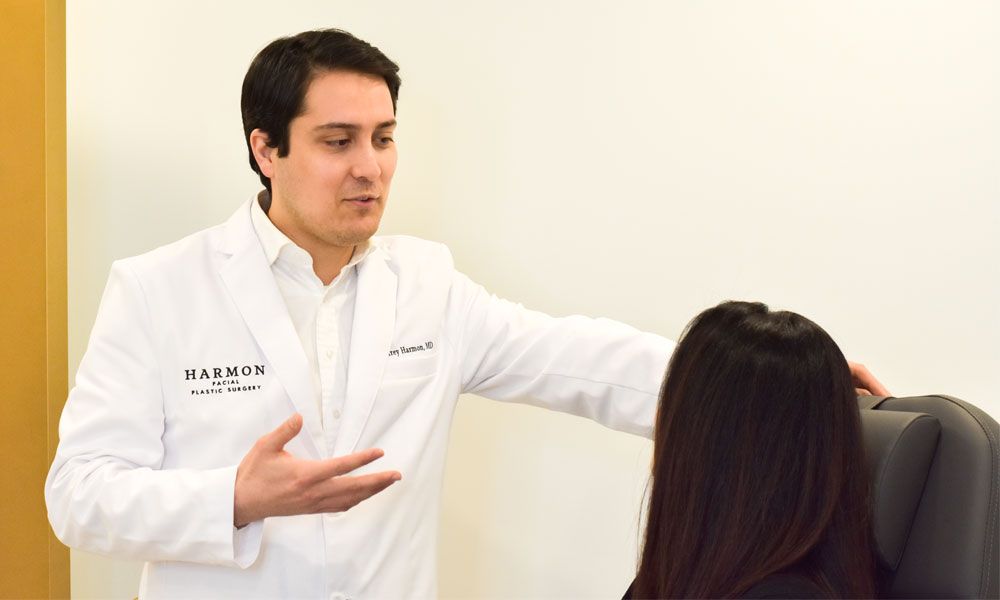It can be difficult to adhere to strict scientific principles when recommending medical treatments to patients as a Cincinnati facial plastic surgeon simply because there is often so little quality data to support some recommendations. It is the nature of surgery more broadly, and plastic surgery specifically, probably because it is so difficult to develop and execute a high-quality study while ethically treating every individual with the most up-to-date standards of care. It is important to seek not only a fellowship-trained but also a double board-certified facial plastic surgeon if you have aesthetic concerns about your face and/or neck.
It is for this reason I thought it important to walk through how physicians think when we evaluate the effectiveness of treatments for patients. This will give you a window into how I think about what I recommend to my patients peri-operatively. The post will provide important context for follow up blog posts where I will comment on common peri-operative treatments intended to improve and accelerate healing.
There are many ways to organize a study that evaluates the effectiveness of an intervention, whether it is a surgical procedure or medication. For example, suppose medication “A” (insert a Millennial, Silicon Valley-esque, non-sensical name) is thought to prevent abnormal scarring after surgery. However, your understanding of its effectiveness is purely anecdotal (“None of my patients have abnormal scarring because of medication ‘A’!”). At that point I dive into the medical literature for studies related to medication “A.”
First, I look for studies with as many of the following qualities as possible:
Controlled: The treatment group that receives medication “A” is compared with a treatment group (control) that either receives no intervention OR the accepted standard of care (see above).
Blinded: The subjects receiving medication “A” and/or the individuals performing the evaluation do not know what intervention is being administered at any time. When BOTH the subjects and the evaluators do not know what treatment is being administered, it is double-blinded. And, just to be clear, this is the only time I will refer to the term “double-blinded” in a positive manner.
Randomized: The subjects and/or treatment sites are randomly assigned to be treated with medication “A” or the control (no intervention OR the accepted standard of care).
A controlled, randomized, blinded (preferably double-blinded!) study is an ideal study to review. Occasionally, there are even studies available that combine the data from multiple studies with those qualities into one large pool of data. These studies are called meta-analyses. An important example of a meta-analysis comes from my mentor and former fellowship director, Andrew Jacono MD, FACS in which he rigorously evaluated and confirmed the safety of the extended deep plane facelift, the gold-standard for facelift techniques and the technique he trained me to employ (1).
But it is not enough to look for the above criteria only when evaluating the quality of a study. It is also important to understand what is actually being measured. So much of facial plastic surgery is based on subjective opinions on appearance, which leaves the assessment of the effects of treatment subject to error.
Broadly, there are three different ways to assess the response to treatments in facial plastic surgery:
Subjective ratings by observers and test subjects with a study-created scale (i.e. what do YOU think?)
A standardized scale published in the literature (e.g. Vancouver Scar Scale [VSS], which sounds like fancy scale in hockey analytics)
Objective assessment as performed by some measurement, such as a computer. It is important to note, however, that the quality of results from objective measurements is entirely dependent on the how we humans set up the measurement itself.
After evaluating the studies for as many of the features above I review the data. And, if I cannot come to a firm, absolute conclusion – which is not uncommon – I weight the potential benefits with the potential risks for my patients. That is where the art of medicine blends with the science of medicine.

